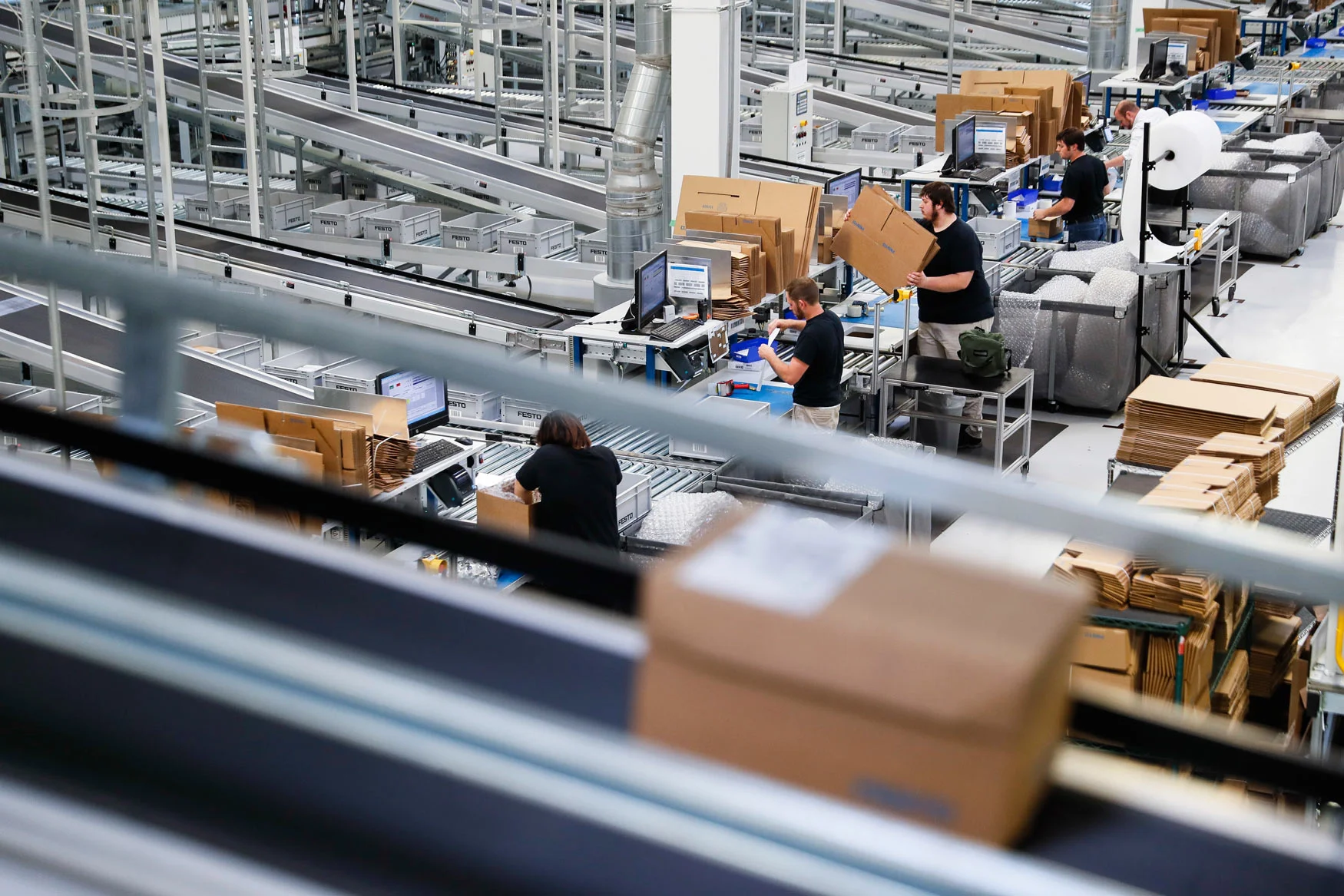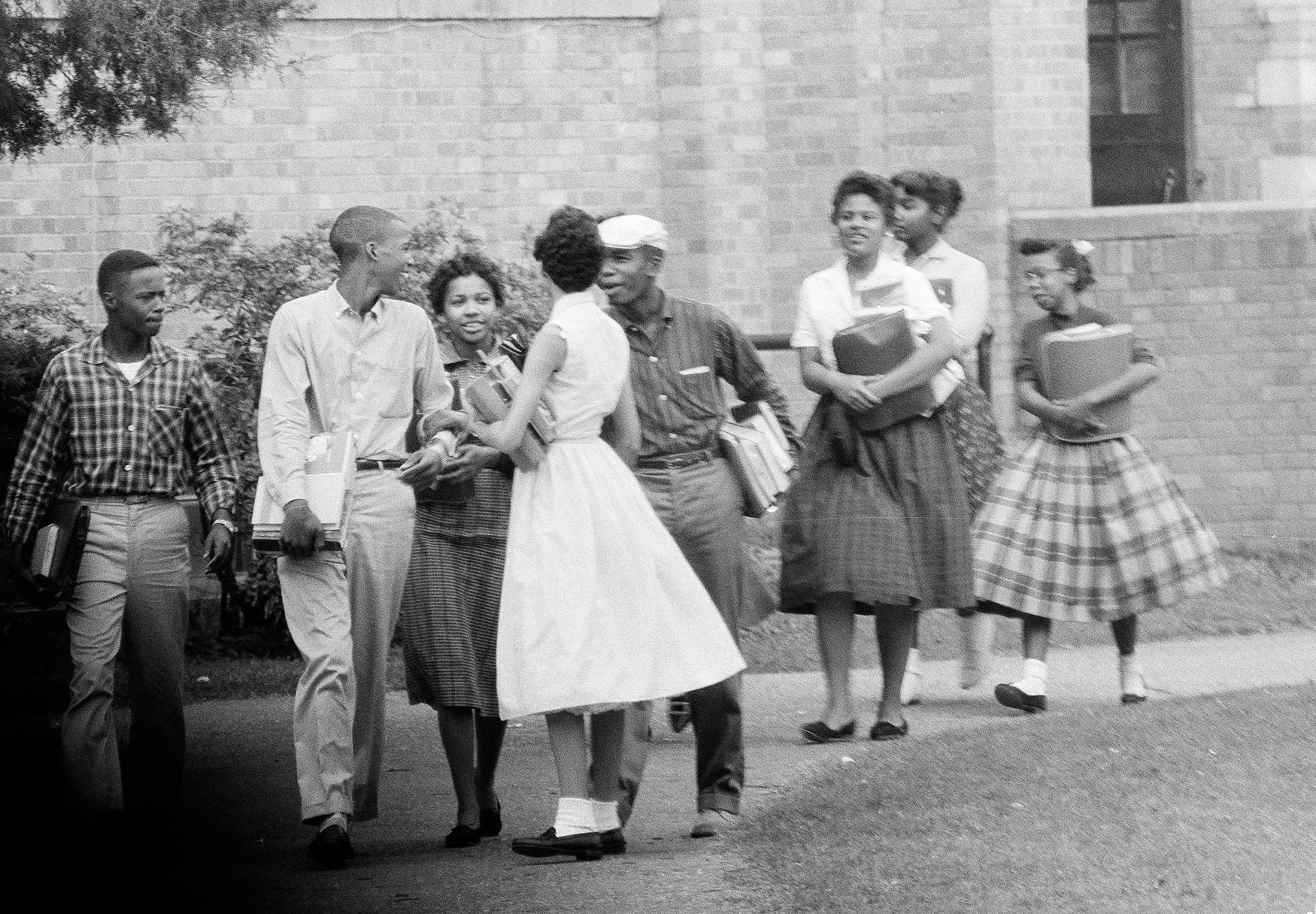Future Of Work: Robophobia

Robots are secretly plotting to kill us. Or enslave us. Or, at best, they will take our jobs, one by one.
From science fiction written by Isaac Asimov eight decades ago to “Dilbert” cartoons today, the relationship between robots and humans has long fascinated — and worried — people.
There’s even a term, “robophobia,” for an irrational anxiety about robots and other advanced automation machines.
In this Tuesday, Aug. 1, 2000 photo, visitors of the world exhibition Expo 2000 stand in front of a robot display at the "Planet of Visions" exhibit at the Expoground in Hanover, northern Germany. Use of robotics in manufacturing and other sectors is increasing in countries from the United States and China, and robots have long been embraced for a variety of uses in countries such as Japan. There also has long been “robophobia,” stoked by science fiction writers and moviemakers. (AP Photo/Fabian Bimmer)
And there are concerns beyond the ones stoked by watching too much “Terminator .”
Apple computer pioneer Steve Wozniak once suggested that robots would turn us into their pets . Physicist Stephen Hawking and tech entrepreneur Elon Musk have also warned about the dangers of going too far, too quickly, in developing “thinking robots” with programmed intelligence that might keep evolving self-awareness, similar to the humanoids in the HBO series “Westworld .”
Hawking told the BBC in 2014 that “development of full artificial intelligence could spell the end of the human race.”
So there’s that.
Researchers vary in projections on how long from now, if ever, such a threat could exist.
In this Aug. 28, 2007 photo, Japanese robot creator Hiroshi Ishiguro interacts with a humanoid he designed to look and behave exactly like himself at his laboratory in Osaka, Japan. Japan faces a vast challenge in making the leap _ commercially and culturally _ from toys, gimmicks and the experimental robots churned out by laboratories to full-blown human replacements that ordinary people can afford and use safely. (AP Photo/David Guttenfelder)
For now, deaths by robot are very rare among industrial accidents. However, in July 2015, a 57-year-old technician was killed by a robotic machine in an Ionia, Michigan, plant that makes auto bumpers, trailer hitches and chrome-plated plastics. Her husband filed a federal lawsuit, being contested by the defendants, alleging a malfunctioning robot took her “by surprise,” crushing her head.
As chief technology officer for a private-public effort to facilitate robotic solutions in U.S. manufacturing, professor Howie Choset of Carnegie Mellon University in Pittsburgh sees the fear of robots taking jobs making his mission tougher.
“You have to start this discussion with the baseline that automation and innovation creates jobs,” he said, by leading to new products and processes and the new jobs to make and operate them.
In this Saturday, Nov. 1, 1997 photo, the robot "Hadaly 2" follows the movement of a light held by Choromatsu, a 10-year-old male monkey, during an experiment at Waseda University in Tokyo. The university's team, which has been working on humanoid robots for more than 30 years, held the world first ever interface experiment between robot and monkey. (AP Photo/Katsumi Kasahara)
“Then you have to ask yourself, why would robots be different? And people are very quick to say, ‘Well, robots are intelligent, they do what humans can do,’ and there’s this fear that was sort of instilled by science fiction.”
Comparing fear of robots to 19th-century worries about steam engines, Choset said: “Robots are just the next generation of tools.”
Singer Aimee Mann, with help from actress Laura Linney, humorously depicted the danger of letting robots help you too much in this music video .
In this Thursday, March, 10, 2016 photo, a pedestrian looks back at a delivery robotic device that has the capacity to hold 6-8 kilograms (13-17 pounds) of cargo in London. The six wheeled intelligent robot that uses GPS systems will make its debut in Greenwich after talks with the local authority led to a partnership with the firm. Greenwich is one of the few areas in the UK that allows unmanned robotic units to be used in public under special license. (AP Photo/Alastair Grant)
And Choset was amused by a recent “Dilbert ” strip about the boss’ inability to stop a robot worker who decided to quit.
Chris Boggess, 18, found the 2004 movie “I, Robot ,” about a rogue killer robot drawn from Asimov stories, frightening, but he has come to understand and appreciate their potential through the Butler Tech robotics program at Colerain High School near Cincinnati.
“The first day I walked in, I fell in love. I knew this was where I needed to be,” Boggess said. “I like robots, anything about technology.”
And if some day thinking robots acquired the ability to threaten humans, he said, “I would probably try to make friends with them.”
In this Friday, Aug. 4, 2006 photo, a diver, right, pushes an underwater autonomous robot in a test pool during the 2006 International Autonomous Underwater competition in San Diego. The challenge was to create a robot that could, free of human control, carry out a series of sinking, swimming and resurfacing tasks in the 38-foot-deep pool. (AP Photo/Chris Park)
In this Tuesday, June 23, 2009 photo, humanoid robot KOBIAN shows an emotional display of "disgust" during a demonstration at Waseda University in Tokyo. KOBIAN, that can express seven programmed emotions by using its entire body including facial expressions, has been developed by researchers at Waseda's Graduate School of Advanced Science and Engineering, led by Prof. Atsuo Takanashi, and robot manufacturer tmsuk, based in Kita Kyushu, southern Japan. (AP Photo/Shizuo Kambayashi)
In this July 13, 2016 photo, Steven Guitron, a mechanical engineering masters student at the Massachusetts Institute of Technology, points a pipette at a tiny "origami robot" floating toward a "wound" in a stomach model in Cambridge, Mass. Guitron, and others at MIT have developed these tiny ingestible robots which are folded up to be swallowed to complete certain tasks inside the body. So far they can be used to patch wounds, remove foreign objects, and even deliver medicine within the body. The robots unfold when ingested, and can be controlled by magnet forces outside of the body. (AP Photo/Elise Amendola)
In this Wednesday, July 13, 2005 file photo, robot jockeys race camels at Al Shahaniyya Camel Racecourse on the outskirts of Doha, Qatar. Seven robots participated in the race. In 2004, Qatar banned the use of children as jockeys in camel races. According to the race officials the first ever robot camel race was a successful event. (AP Photo)
In this April 30, 1950 file photo, a man inspects what is said to be the first robot in history on display in the Deutsches Museum in Munich. The "soldier," which has an automatic bellows that blows a trumpet, was made in 1810 by Friedrich Kauffman of Dresden, Germany (AP Photo/Heinrich Sanden)
In this Wednesday, Aug. 3, 2016 photo, a tissue-engineered robot swims in a tank of water in a laboratory at Harvard University in Cambridge, Mass. The stingray-shaped robot, capable of swimming in water after exposure to blue light, has a gold skeleton, silicone fins and the heart muscle cells of a rat. (AP Photo/Steven Senne)
In this Tuesday, Jan. 3, 2006 photo, "Actroid," a robot made by the Japanese company Kokoro Co., welcomes visitors during a preview of a robot show in Taipei, Taiwan. The company says it can recognize speech in four languages. (AP Photo/Jerome Favre)
In this Wednesday, April 20, 1983 file photo, a bomb removal robot, remote controlled by police, at left around the corner, carries a briefcase believed to be a bomb to a waiting truck in New York. It turned out that the suitcase held telephone repairman tools. (AP Photo/David Bookstaver)
In this Tuesday, Oct. 7, 2008 photo, robotic suits named HAL (Hybrid Assistive Limb) are demonstrated during a news conference at the headquarters of Cyberdyne, a new company in Tsukuba, outside Tokyo. HAL, which reads brain signals and helps people with mobility problems, will be available to rent in Japan for US$2,200 for both legs and $1,500 for a one leg a month and may have far-reaching benefits for the disabled and elderly. (AP Photo/Katsumi Kasahara)
In this Monday, Oct. 3, 2005 photo, a man is disarmed by a robot outside a Wells Fargo bank he tried to rob in Tucson, Ariz. Police said Sgt. Jeffry Leon Lewis Jr., 33, an Army sergeant from Fort Huachuca, walked into the bank branch here Monday and presented a note saying he had a bomb in his mouth, which was covered in duct tape. No explosives were found in his mouth or backpack or in his vehicle parked nearby, according to police. (Benjie Sanders/Arizona Daily Star via AP)
This undated photo shows a German V1 robot bomb flying towards London. Of the 8,000 launched, 2,300 robots got through the gun, fighter plane and balloon defenses, and badly damaged more than a million homes, killing over 5,000 British civilians. (AP Photo)
In this Oct. 24, 2014 photo, researchers Randall Briggs, left, and Will Bosworth monitor a robotic cheetah during a test run on an athletic field at the Massachusetts Institute of Technology in Cambridge, Mass. MIT scientists said the robot, modeled after the fastest land animal, may have real-world applications, including development for prosthetic legs. (AP Photo/Charles Krupa)
Text from the AP news story, From Isaac Asimov to Aimee Mann, ‘robophobia’ plagues humans, by Dan Sewell.
Visual artist and Journalist





